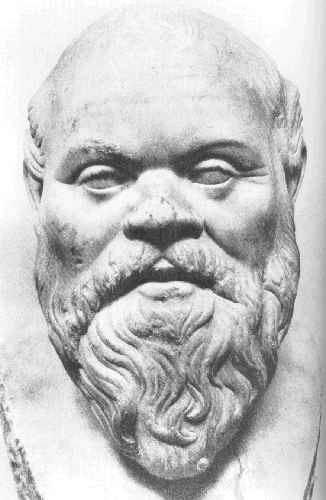Difference between revisions of "Dualism" - New World Encyclopedia
Keisuke Noda (talk | contribs) (importing from wiki) |
Keisuke Noda (talk | contribs) m |
||
| Line 97: | Line 97: | ||
[[Category:Metaphysics]] | [[Category:Metaphysics]] | ||
| − | [[Category: | + | [[Category:Philosophy and religion]] |
| − | |||
| − | |||
| − | |||
| − | |||
| − | |||
| − | |||
| − | |||
| − | |||
| − | |||
| − | |||
| − | |||
| − | |||
| − | |||
| − | |||
| − | |||
| − | |||
| − | |||
| − | |||
| − | |||
| − | |||
| − | |||
| − | |||
| − | |||
{{Credit|61041902}} | {{Credit|61041902}} | ||
Revision as of 13:55, 3 July 2006
| Philosophy Portal |
The term dualism has a number of uses in the history of thinking. In a given domain of knowledge, the idea involves the existence of two fundamental classes of things, or principles, often in opposition to each other. In theology, dualism can refer the belief that there are two basic opposing principles, such as good, and evil. In philosophy of mind, dualism refers to the views that mind and matter are two ontologically separate entities.
Usage in Hindu Philosophy
Samkhya proposes the dualism of Prakriti and Purusha. Prakriti is the nature and Purusha is the conciousness (i.e. the silent witness of Prakriti).
In Vedantic philosophy (which denies the dualism of Samkhya and proposes that Prakriti and Purusha are one and the same), Dvaita believes the dualism in Atma (soul of human beings) and the Paramatma (the GOD).
Theological usage
"Western" or "theistic" usage
Main Article: Theology
In theology, dualism can refer to ditheism: the belief that there are two basic principles, usually personified as deities, that work in polar opposition to each other. For example, one god is good, the other evil; or one god works for order, the other for chaos. Both the Zoroastrian religion, three-millennia old and still extant, and the essentially dead gnostic religion (and its variations such as, Manichaeism, Bogomils, Catharism, etc.) are dualistic, as is Mandaeanism. The third-century Christian heretic Marcion of Sinope held that the Old and New Testaments were the work of two opposing gods. The Christian conflict between God (the source of all good) and Satan (the source of all evil) is sometimes described in dualistic terms.
"Eastern" or "mystic" usage
Main Article: Mysticism
Alternatively, dualism can mean the tendency of humans to perceive and understand the world as being divided into just two categories. In this sense, it is dualistic when one perceives a tree as a thing separate from everything surrounding it, or when one perceives a "self" that is distinct from the rest of the world. In traditions such as Zen, a key to enlightenment is "overcoming" this sort of dualism, without merely substituting it with monism or pluralism.
The opposition and combination of the universe's two basic principles of Yin and Yang is a large part of Taoist religion. Some of the common associations with Yang and Yin, respectively, are: male and female, light and dark, active and passive, motion and stillness. Although, these interpretations are common and understandable misconceptions of the greater meaning. The Tai-Chi in actuality has very little to do with dualism.
The complementary aspects of masculinity and femininity are revered by certain Neo-pagan religions.
Usage in philosophy of mind
Main Article: Mind-body dualism
In philosophy of mind, dualism is any of a narrow variety of views about the relationship between mind and matter, which claims that mind and matter are two ontologically separate categories. In particular, mind-body dualism claims that neither the mind nor matter can be reduced to each other in any way, and thus is opposed to materialism in general, and reductive materialism in particular. Mind-body dualism can exist as substance dualism which claims that the mind and the body are composed of a distinct substance, and as property dualism which claims that there may not be a distinction in substance, but that mental and physical properties are still categorically distinct, and not reducible to each other. This type of dualism is sometimes referred to as "mind and body". This is in contrast to monism, which views mind and matter as being ultimately the same kind of thing. See also Cartesian dualism, substance dualism, epiphenomenalism.
The belief in possessing both a body and a spirit as two separate entities was first documented in approximately 1000 B.C.E. by Zoroastrianism, and has become a very common view in the present day.
Mind-Matter Dualism in Eastern Philosophy
In Samkhya Philsophy
As per Samkhya, the whole of nature is called Prakriti which consists of three Gunas: Sattva, Rajas and Tamas. Mind is as much part of the nature as matter is. Only conciousness is separate.
In Vedantic Philosophy
Vedantic philosophy also does not propose dualism in mind and matter. It rather looks at everything as Brahman which is also called Satchitananda (Being-Conciousness-Bliss). The nature (which consists of mind as well as matter) is a projection of this Brahman.
In Buddhist Philosophy
During the classical era of Buddhist philosophy in India, philosophers such as Dharmakirti argue for a dualism between states of consciousness and Buddhist atoms (Buddhist atoms are merely the basic building blocks that make up reality), according to "the standard interpretation" of Dharmakirti's Buddhist metaphysics. (See Georges B.J. Dreyfus, Recognizing Reality, SUNY Press, for more information.) Typically, in Western philosophy, dualism is considered to be a dualism between mind (nonphysical) and brain (physical), which ultimately involves mind interacting with pieces of tissue in the brain, and therefore, also interacting, in some sense, with the micro-particles (basic building blocks) that make up the brain tissue. Buddhist dualism, in Dharmakirti’s sense, is different in that it is a dualism between not the mind and brain which is made of particles, but rather, between states of consciousness (nonphysical) and basic building blocks (according to the Buddhist atomism of Dharmakirti, Buddhist atoms are also nonphysical: they are unstructured points of energy). Like so many Buddhists from 600-1000 C.E., Dharmakirti’s philosophy involved mereological nihilism, meaning that other than states of consciousness, the only things that exist are momentary quantum particles, much like the particles of quantum physics (quarks, electrons, etc.). Dharmakirti’s dualism however has one similarity to Western accounts of mind-body dualism, Dharmakirti’s dualism may also be considered as being not well worked-out, where few philosophers would assert that clear accounts of dualism in either tradition have been given, and many philosophers will assert, following Descartes, that dualism involves serious problems that remain unsolved.
Usage in philosophy of science
In philosophy of science, dualism often refers to the dichotomy between the "subject" (the observer) and the "object" (the observed). Some critics of Western science see this kind of dualism as a fatal flaw in science. In part, this has something to do with potentially complicated interactions between the subject and the object, of the sort discussed in the social construction literature.
Usage in physics
Main Article: Wave-particle duality
In physics, dualism refers generally to the duality of waves and particles. Where an elementary particle shows the characteristics of both a wave and a physical particle.
Usage in contemporary feminist theory
An interesting theory relating to dualism and a contemporary feminist world view is presented by Susan Bordo. Bordo contends that dualism has shaped Western culture since the time of Plato, through Augustine and Descartes, up to the present day.
All three of these philosophers provide instructions, rules or models as to how to gain control over the body, with the ultimate aim of learning to live without it. The mind is superior to the body, and strength comes from disregarding the body's existence to reach an elevated spiritual level.
Bordo believes that the existence of anorexia nervosa is the most telling and compelling argument that dualism is still a key aspect of modern thinking. She believes it is oftentimes a dangerous way of looking at the world. Those who are anorexic seek to gain ultimate control, and depriving oneself of food makes one a master of one's own body, which creates a sense of purity and perfection. Again, Bordo contends this stems from dualism, the separation of the mind and body.
Usage in recent religious and philosophical movements
In recent years, with world travel and rapid communication systems, the distinction between "eastern" and "western" philosophy has been less significant than in previous times. In the wake of these changes new religious and philosophical movements have drawn freely upon all the world's philosophy to create syntheses and compendia based around new age and holistic ideas. Dualism is often cited within these groups, along with ideas of Oneness, Wholeness and Theories of multiple intelligences.
In the Emin Society (printed in their archives) Dualism is presented as the Law of Two, which is said to have seven levels:
- First level: Apparent Opposites
- Second level: The apparent opposites are actually two ends of the same bar (or the North-South vector is split by the East-West vector) (or the law of things adjacent)
- Third level: Pitching and Yawing, (or Basque bargaining)
- Fourth level: Balance and Movement
- Fifth level: Solve and Coagulate
- Sixth level: Over and Under Compensation
- Seventh level: Apparent movement between two poles (or hot and cold)
See also
|
|
External links
- Iranian Cosmogony & Dualism (CAIS)
- Dictionary of the History of ideas: Dualism in Philosophy and Religion
- Binitarian View: One God, Two Beings from Before the Beginning Discusses the biblical and historical belief of the nature of God
- Books on (Religious) Dualism Recommendations and Reviews
- A very good gallery of images about Dualiti and twins symbols from the book Twins and doubles
Credits
New World Encyclopedia writers and editors rewrote and completed the Wikipedia article in accordance with New World Encyclopedia standards. This article abides by terms of the Creative Commons CC-by-sa 3.0 License (CC-by-sa), which may be used and disseminated with proper attribution. Credit is due under the terms of this license that can reference both the New World Encyclopedia contributors and the selfless volunteer contributors of the Wikimedia Foundation. To cite this article click here for a list of acceptable citing formats.The history of earlier contributions by wikipedians is accessible to researchers here:
The history of this article since it was imported to New World Encyclopedia:
Note: Some restrictions may apply to use of individual images which are separately licensed.

